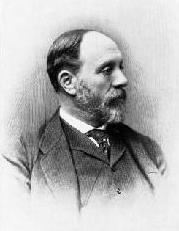- John Wolfe-Barry
Infobox Engineer

image_width = 150px
caption = John Wolfe-Barry
name = John Wolfe-Barry
nationality = English
birth_date =December 7 ,1836
birth_place =
death_date = Death date and age|1918|1|22|1836|12|7
death_place =
education =Glenalmond College andKing's College London
spouse =
parents =
children =
discipline = Civil,
institutions =Institution of Civil Engineers (president),
practice_name =
significant_projects =Tower Bridge ,Blackfriars Railway Bridge ,
significant_design =Cannon Street Railway Bridge ,Kew Bridge ,District Line
significant_advance =
significant_awards =Sir John Wolfe-Barry (
December 7 ,1836 –January 22 ,1918 ) was an Englishcivil engineer of the late 19th and early 20th century. His most famous project was the construction ofTower Bridge over the RiverThames inLondon .Early career
Wolfe-Barry, the youngest son of
architect SirCharles Barry , added 'Wolfe' to his inherited name in 1898. He was educated at Glenalmond andKing's College London , and was a pupil of civil engineer SirJohn Hawkshaw , as wasHenri Marc Brunel , son of the greatIsambard Kingdom Brunel . Barry and Hawkshaw worked on railway bridge crossings across the Thames, among other projects (Brunel pursued his own business from 1871, but in 1878 went into partnership with Barry). Barry began his own practice in 1867, and carried out more work for the railways.Tower Bridge
However, it was Tower Bridge that really made Wolfe-Barry's name. In 1878,
architect Horace Jones first proposed a low-levelbascule bridge. An Act of Parliament allowing the Corporation of theCity of London to build it was passed in 1885. Jones was appointed architect, and knighted, but died the same year. Wolfe-Barry, already well-established with experience of bridges across the Thames, then took control.Other projects
His other projects included:
*Cannon Street Railway Bridge (aka the Alexandra Bridge) (1866)
*Blackfriars Railway Bridge (aka St Paul's Bridge), London (1886)
* docks at Barry nearCardiff , southWales
*District Line of theLondon Underground (with Sir John Hawkshaw)
* pumping stations on theRegent's Canal , north London
*Kew Bridge , west London (1903)
* expansion ofGreenland Dock , Surrey Docks (nowSurrey Quays ), south-east London (1904)Industry standardisation
A recognised industry leader (he was elected President of the
Institution of Civil Engineers in 1896Citation | first = Garth | last = Watson| title = The Civils | publisher = London: Thomas Telford Ltd | page = 252
year = 1988 | isbn = 0-727-70392-7] , knighted in 1897, and served on several Royal Commissions), Wolfe-Barry played a prominent role in the development of industry standardisation, urging the ICE's Council to form a committee to focus on standards for iron and steel sections.Two members each from the ICE, the
Institution of Mechanical Engineers , the Institution of Naval Architects and the Iron and Steel Institute first met on26 April 1901 . With theInstitution of Electrical Engineers who joining the following year, these bodies were the founder institutions of what is today theBritish Standards Institution or BSI.Late career
He was chairman of
Cable and Wireless from 1900 to 1917.In 1902 Wolfe-Barry joined the consulting firm Robert White & Partners, and it was renamed Wolfe-Barry, Robert White & Partners (later, 1946, Sir Bruce White, Wolfe Barry and Partners – now part of London-based consultancy Beckett Rankine).
Wolfe-Barry died in January 1918 and was buried in
Brookwood Cemetery nearWoking inSurrey .References
External links
* [http://www.findagrave.com/cgi-bin/fg.cgi?page=gr&GRid=8219590 John Wolfe-Barry's Gravesite]
s-start s-npo|pro s-bef|before=
Benjamin Baker s-ttl|title=President of theInstitution of Civil Engineers
years=June 1896 – April 1898 s-aft|after=William Henry Preece end
Wikimedia Foundation. 2010.
